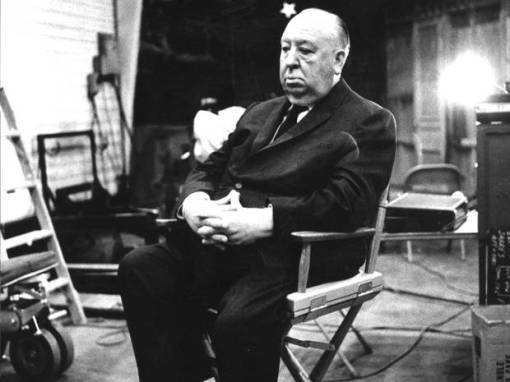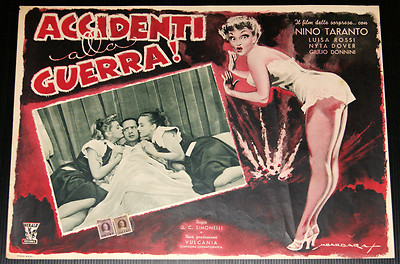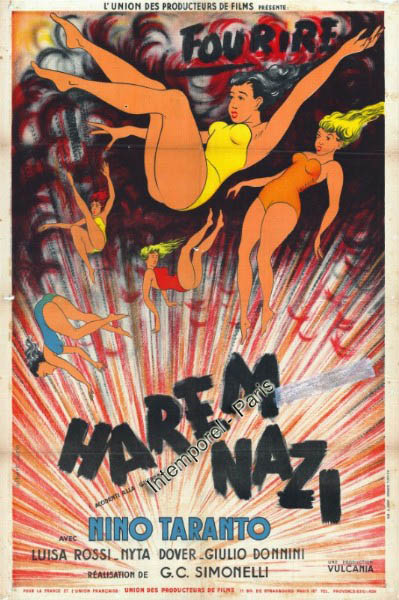
Source: Geoffrey Macnab, The Independent, January 8, 2014
The British Army Film Unit cameramen who shot the liberation of Bergen-Belsen concentration camp in 1945 used to joke about the reaction of Alfred Hitchcock to the horrific footage they filmed. When Hitchcock first saw the footage, the legendary British director was reportedly so traumatised that he stayed away from Pinewood Studios for a week. Hitchcock may have been the king of horror movies but he was utterly appalled by “the real thing”.
In 1945, Hitchcock had been enlisted by his friend and patron Sidney Bernstein to help with a documentary on German wartime atrocities, based on the footage of the camps shot by British and Soviet film units. In the event, that documentary was never seen.
“It was suppressed because of the changing political situation, particularly for the British,” suggests Dr Toby Haggith, Senior Curator at the Department of Research, Imperial War Museum. “Once they discovered the camps, the Americans and British were keen to release a film very quickly that would show the camps and get the German people to accept their responsibility for the atrocities that were there.”
The film took far longer to make than had originally been envisaged. By late 1945, the need for it began to wane. The Allied military government decided that rubbing the Germans’ noses in their own guilt wouldn’t help with postwar reconstruction.
Five of the film’s six reels were eventually deposited in the Imperial War Museum and the project was quietly forgotten.
In the 1980s, the footage was discovered in a rusty can in the museum by an American researcher. It was eventually shown in an incomplete version at the Berlin Film Festival in 1984 and then broadcast on American PBS in 1985 under the title Memory of the Camps but in poor quality and without the missing sixth reel. The original narration, thought to have been written by future Labour Cabinet Minister Richard Crossman in collaboration with Australian journalist Colin Wills, was read by actor Trevor Howard.
Now, finally, the film is set to be seen in a version that Hitchcock, Bernstein and the other collaborators intended. The Imperial War Museum has painstakingly restored it using digital technology and has pieced together the extra material from the missing sixth reel. A new documentary, Night Will Fall, is also being made with André Singer, executive producer of The Act of Killing, as director and Stephen Frears as directorial advisor. Both the original film about the camps and the new documentary will be shown on British TV in early 2015 to mark the 70th anniversary of the “liberation” of Europe. Before that, next year, they are due to be shown together at festivals and in cinemas.
The decision to revive the film is bound to provoke anguished debate. It includes truly shocking footage of the camps (Belsen-Bergen in particular.) The film’s own commentary, which has been re-recorded with a new actor, has a phrase about “sightseers” at a “chamber of horrors”.
Billy Wilder, who directed Death Mills (1945), an American film about the German atrocities, was forthright about why he did not want atrocity footage to be seen in later years. Wilder questioned whether it had worked in “re-educating” the German civilian population about what their leaders had been doing in their name.
“They [the Germans] couldn’t cope with it. He [Wilder] told me people just left the screening or closed their eyes. They didn’t want to see,” Wilder’s friend Volker Schlöndorff recalled in a 2011 interview. “They found out it was almost unbearable to see these documents and almost indecent for the victims or the people related to the victims.”
In Memory of the Camps, there is imagery of heaps of naked bodies being piled up in mass graves. The footage seems as surreal as anything you might see in a Hieronymus Bosch painting but then you remember that these corpses haven’t been conjured up by some artist’s twisted imagination. These are real victims whose relatives are alive today.
In the documentary, we see the Germans themselves confronted with the enormity of the crimes committed in their name and forced to help bury the dead themselves.
As Toby Haggith acknowledges, the film is “much more candid” than any of the other documentaries about the camps. Haggith also describes it as “brilliant” and “sophisticated”. The editors Stewart McAllister (famous for his work with Humphrey Jennings) and Peter Tanner, working under advice from Hitchcock, fashioned an immensely powerful and moving film from the hours and hours of grim material at their disposal. The documentary isn’t all about death. We also see imagery of reconstruction and reconciliation. There is footage of camp inmates having their first showers and cleaning their clothes. The film-makers show the painstaking way that typhus was eradicated from the camps.
Haggith speak of the “brilliance” of the original cameramen at the camps, who were working without direction but still had an uncanny knack for homing in on the most poignant and telling images.
“It’s both an alienating film in terms of its subject matter but also one that has a deep humanity and empathy about it,” Haggith suggests. “Rather than coming away feeling totally depressed and beaten, there are elements of hope.”
The Trevor Howard voiceover narration in Memory of the Camps is strangely reminiscent of the one that director Carol Reed himself read over the opening of The Third Man (in which Howard co-starred.) It has the same sardonic understatement as it describes the devastation wreaked by the war. In the new version, the words will remain (but have now been recorded by a contemporary actor.)
Memory of the Camps was a title given to the documentary years after it was made. It will now be renamed. Haggith won’t reveal the new title.
For Hitchcock fans, the Holocaust film is a cause for both excitement and wariness. On the one hand, it seems obvious that his work on the documentary must have had a profound influence on him. He may have been a “treatment advisor” on the project rather than its actual director but his exposure to imagery as extreme as this must have coloured his approach to depicting horror and violence on screen.
The wariness comes from the sense that it is both distasteful and absurdly reductive to see a Nazi atrocity documentary as a ” Hitchcock movie”. We will never know exactly how much he contributed to the film, even if it seems certain that his ideas about how it should be structured were taken on board.
“Our experience with it has been similar to the experience of the cameramen really, in that the technical work has to some degree protected us from the meaning of the film,” Haggith suggests of the experience of spending many months poring over such gruesome and disturbing imagery. He adds that “the fact that we have been habituated to these images over the last 70 years” has meant that the restorers have been able to treat the film as “historical source material”.
The restoration is now almost complete. How will contemporary audiences react to a film which, when it was first being put together, traumatised Hitchcock himself and so deeply upset its original editors, who weren’t aware of what had actually gone on in the camps?
“Judging by the two test screenings we have had for colleagues, experts and film historians, what struck me was that they found it extremely disturbing,” Haggith says. “When you’re sitting in a darkened cinema and you’re focusing on a screen, your attention is very focused, unlike watching it on television… the digital restoration has made this material seem very fresh. One of the common remarks was that it [the film] was both terrible and brilliant at the same time.”
That, Haggith, believes is testament to the craftsmanship of the film-makers, who took some of “the most atrocious and disturbing footage that had yet been recorded in cinema at that stage” and turned into a film that was lucid, moving and instructive as well as appalling. The job now for those showing the film is to provide context and explanation. As Haggith puts it: “We can’t stop the film being incredibly upsetting and disturbing but we can help people understand why it is being presented in that way.”









